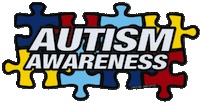 April is not only Occupational Therapy Month, but also National Autism Awareness Month. After about 17 years, the American Psychiatric Association (APA) has undertaken a revision of its authoritative text, The Diagnostic and Statistical Manual of Mental Disorders (The D.S.M.) and with it, a tightening of the definition of autism. The current D.S.M. definition requires a child to exhibit at least six of twelve specific developmental and behavioral characteristics, which fall into three broader categories: deficits in communication; deficits in social interaction; and repetitive and restricted behaviors and interests. In addition, these symptoms cannot be attributed to any other similar condition, such as Rett or Asperger’s Syndromes, and their onset must manifest before the age of three.
April is not only Occupational Therapy Month, but also National Autism Awareness Month. After about 17 years, the American Psychiatric Association (APA) has undertaken a revision of its authoritative text, The Diagnostic and Statistical Manual of Mental Disorders (The D.S.M.) and with it, a tightening of the definition of autism. The current D.S.M. definition requires a child to exhibit at least six of twelve specific developmental and behavioral characteristics, which fall into three broader categories: deficits in communication; deficits in social interaction; and repetitive and restricted behaviors and interests. In addition, these symptoms cannot be attributed to any other similar condition, such as Rett or Asperger’s Syndromes, and their onset must manifest before the age of three.
The revised definition reduces these symptoms to seven and collapses them into two groups: deficits in communication and social interaction; and restricted, repetitive behaviors and interests. The change is reflective of recent research and more closely mirrors how clinicians and therapists currently view autism; as one part of a spectrum of related disorders and not as a separate entity. Autism Spectrum Disorder (ASD), as it is known in the field, is a continuum of disorders including: autism, Asperger’s, childhood disintegrative disorder and pervasive developmental disorder not otherwise specified (or PDD-NOS). The APA’s belief is that a more compact definition of autism will lead to fewer and more accurate diagnoses of clients overall.
Nonetheless, there is still disagreement among the experts, as well as unease among parents of ASD children, as to whether or not patients at either end of the spectrum, those with low level symptoms or those with higher-functioning capabilities, will be excluded under the new criteria. The APA views the D.S.M. in general as a set of guidelines to be used in patient evaluations, allowing for subjective interpretation by the clinician. Given the direct correlation between diagnosis and treatment services rendered, it is clear why many are concerned. The APA plans an open review of the final revised definition before final publication of the D.S.M. in May of 2013, and experts believe that some tweaking will occur that will help to allay some of these worries.
How would this proposed change affect Occupational Therapists and their clients? OT services are not diagnosis-driven, but client-driven, with treatment customized to the individual’s unique occupational profile. Therefore, no change is anticipated in Occupational Therapy services provided to any diagnosed and referred client. What may change, however, is the number of referrals based on these new criteria, which in turn could greatly affect funding streams. The goal to bring real world precision to the diagnosis of autism, will likely change research of the disorder, especially outcomes research. Sharpening the scope and recognized symptoms of ASD, enables OTs to construct and execute more efficient and effective therapeutic interventions. For example, many ASD children and young adults exhibit sensory processing complications. The proposed redefinition includes this issue in its revised diagnostic benchmarks. It seems reasonable to assume that as a result, there will now be an increase in research and Occupational Therapy treatment plans designed to address this specific symptom. Although it is clearly too early in the process to know all of the ramifications for OTs and their clients, there appear to be more benefits than detriments.
If you are a master or a novice in the field of Occupational Therapy and are looking to find a challenging and cutting edge position, contact the Centra team at 800 535 0076 and let us help you make a difference in the life of an ASD patient.